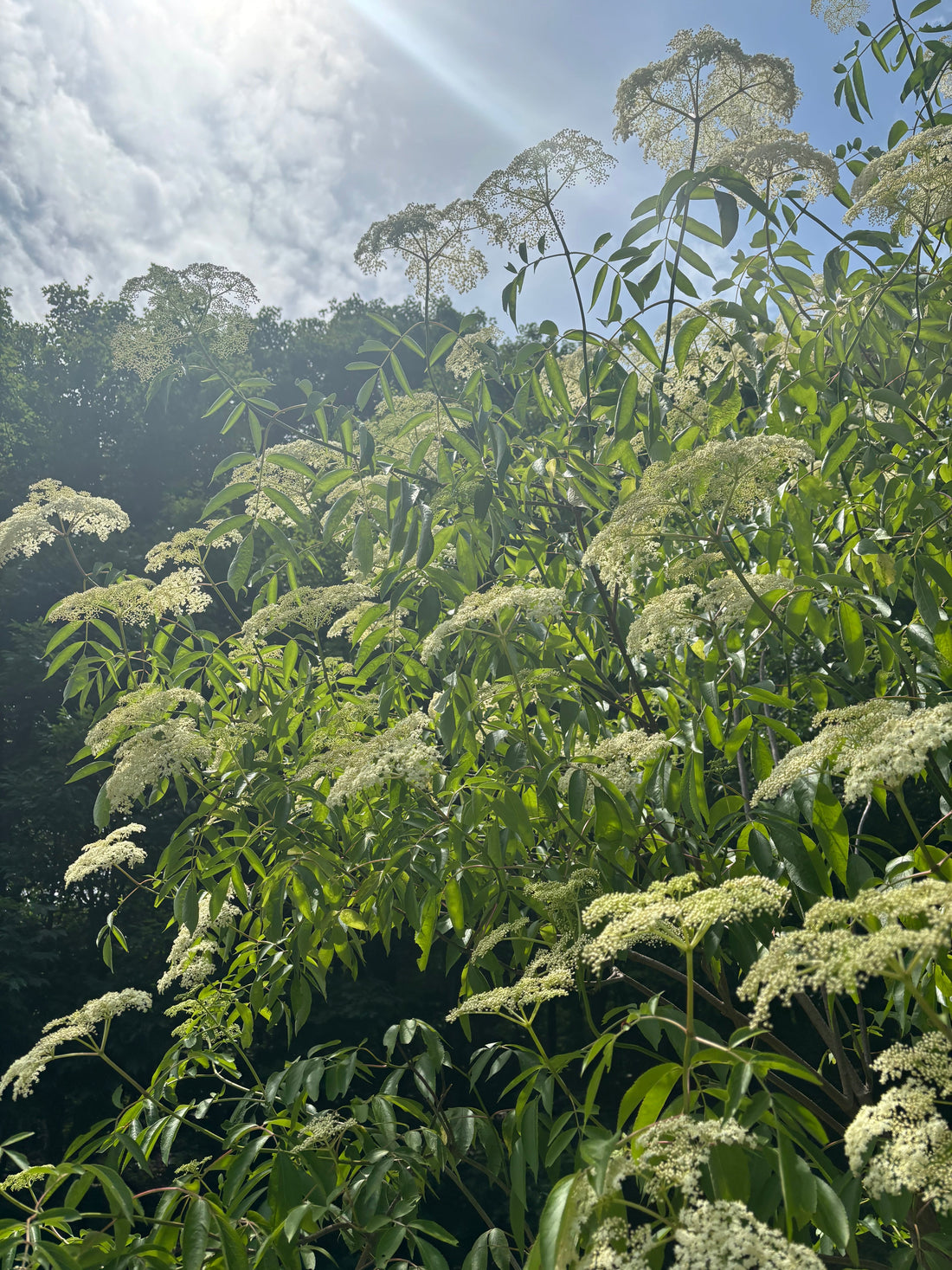
Working With the Seasons: Herbalism Rooted in Rhythm and Reverence – July 2025
Share
One of the things I’ve come to appreciate most about being an herbalist is the way it invites us into a deeper rhythm with nature. It’s a practice that blends reverence with relationship—tuning in to the cycles of the seasons and the wisdom of the plants that grow around us.
Depending on where you live, the landscape and plant life can look vastly different. You might be surrounded by lush forests, coastal meadows, or a city park. Even in urban areas, plants find a way to grow—in sidewalk cracks, vacant lots, or cultivated gardens. Wherever you are, there’s a way to work seasonally with herbs and tap into the medicine of your local environment.
One idea that continues to resonate with me is the animistic view that everything has spirit—including plants, landscapes, and even the weather. There's a term I've come to love (often referred to as genius loci, or “spirit of place”) that speaks to the idea of honoring the unique spirit of the land you walk on. When we forage herbs, it’s not just a physical act—it’s a conversation, a communion. We admire the plant's beauty, ask for its permission, and harvest with gratitude. We take only what we need and always leave enough for the plant to continue thriving.
Plants have an incredible way of showing up for us when we need them. As the seasons change, they offer just the kind of support our bodies often require. In early spring, herbs like purple dead nettle and creeping charlie begin to carpet the lawns—offering gentle lymphatic and detoxifying properties that align beautifully with seasonal transitions.
As summer arrives, the landscape bursts with blooms. Elderflowers and St. John’s wort shine during this time, offering nervous system support and bright, solar energy. By autumn, we begin to see plants like goldenrod blooming along roadsides and meadows. Though often mistaken for an allergy trigger, it’s actually a similar looking plant known as ragweed that is usually the culprit. Goldenrod can be helpful for drying up excess mucus, supporting sinus health, and gently toning tissues.
By late autumn, those elderflowers have ripened into dark purple berries—a potent immune ally as we head into winter. One of my favorite ways to work with them is to make a yummy syrup. This seasonal dance of plants mirrors what’s happening in our bodies. Herbalism encourages us to pay attention to our own constitution and work with the energetics of herbs to support balance—hot/cold, damp/dry, tense/relaxed. For example, during colder months, we might reach for warming and pungent herbs like ginger or cayenne to support circulation and bring warmth to our bodies. One of my favorite remedies as an example of a pungent warming tonic would be fire cider – a beloved brew made famous by renowned herbalist Rosemary Gladstar. It is a delicious blend of pungent herbs in a base of apple cider vinegar and sweetened with honey (or agave syrup if you prefer). The combination of the acidic vinegar with the sweetness of the honey is called “oxymel.”
In the quiet stillness of winter, we can continue to connect with the vibrant healing energy of plants. Evergreens like pine remain green through the cold months, offering potent support for the respiratory and immune systems. Pine needles are a rich source of vitamin C and can be brewed into a nourishing tea or crafted into a soothing cough syrup. The aroma also makes pine an excellent choice for herbal steam inhalations to help open up the sinuses and clear congestion — bringing both clarity and comfort.
Even when a plant is no longer in season, we can still access its medicine through the practice of tincturing. Tinctures preserve the essence and constituents of a plant in a concentrated liquid form, allowing us to work with herbs like St. John’s wort in the depths of winter, long after it has stopped blooming. This is one way to honor the plant’s presence and energy while also practicing sustainability. When wildcrafting, tincturing allows us to create long-lasting medicine without overharvesting, ensuring the plants can regenerate and flourish.
At its heart, herbalism is about this relationship with nature. It’s about respecting the plants, moving with the rhythm of the seasons, and listening deeply—to the land, to our bodies, and to the spirit in all things.